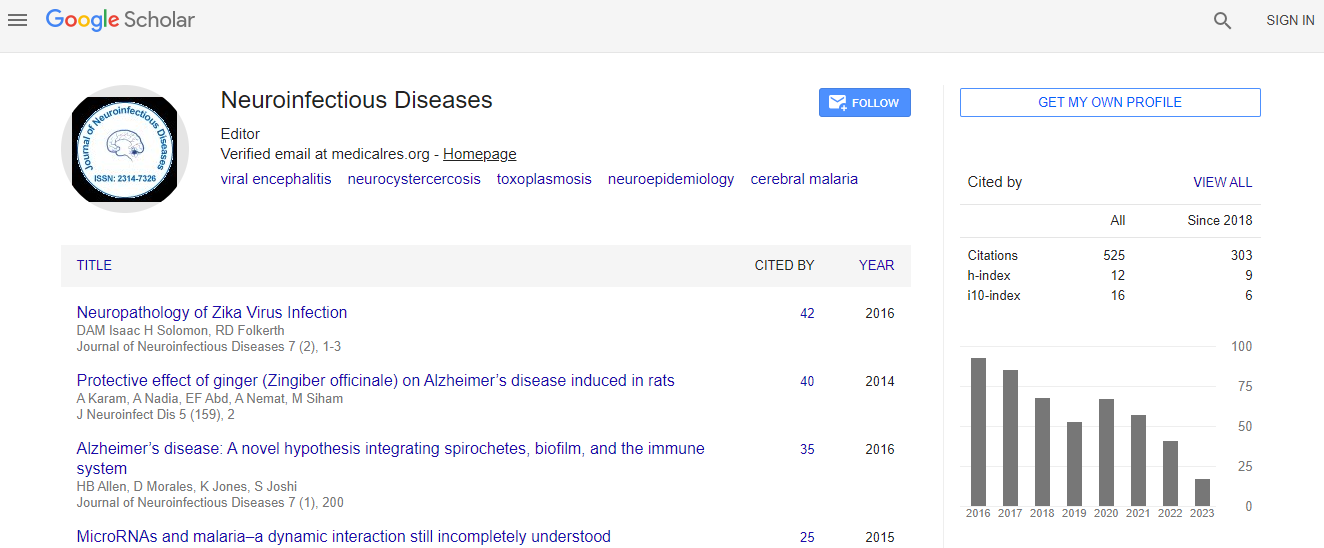Case Report
Stroke in a Young Patient: A Sentinel Presentation of Neurosyphilis and Human Immunodeficiency Virus (HIV)
| Shawna Cutting* and Elizabeth Flaherty | |
| Department of Neurology, Rush University Medical Center, Chicago, Illinois, USA | |
| *Corresponding Author : | Shawna Cutting Department of Neurology Rush University Medical Center 1725 West Harrison St, Chicago, Illinois, USA Tel: 3129424500 E-mail: Shawna_cutting@rush.edu |
| Received November 09, 2015; Accepted January 04, 2016; Published January 11, 2016 | |
| Citation: Cutting S, Flaherty E (2016) Stroke in a Young Patient: a Sentinel Presentation of Neurosyphilis and Human Immunodeficiency Virus (HIV). J Neuroinfect Dis 7:197.doi:10.4172/2314-7326.1000197 | |
| Copyright: © 2016 Cutting S, et al. This is an open-access article distributed under the terms of the Creative Commons Attribution License, which permits unrestricted use, distribution, and reproduction in any medium, provided the original author and source are credited. | |
Abstract
Objective: To describe a case of ischemic stroke in a young patient leading to diagnosis of concomitant neurosyphilis and HIV infections. Background: Meningovascular syphilis is an early manifestation of neurosyphilis which can lead to an infectious endarteritis (Heubner’s arteritis) and subsequent ischemic stroke. In the present era, early neurosyphilis is most frequently seen in patients with concomitant HIV infection and previous series have demonstrated that neurosyphilis a common sentinel presentation of HIV. However, clinicians may fail to inquire about at-risk behaviors and test for these infections in young stroke patients. Methods: Case report of a young patient with multifocal ischemic stroke admitted to our institution. Results: A 19 year-old male with a history of migraine headaches, worsened over several months, presented to a community hospital after awakening with left sided hemiplegia, numbness, and slurred speech. MRI brain revealed multifocal ischemic stroke in the middle cerebral artery territory and right cerebellum. After an unrevealing initial workup, he was transferred to our academic facility for further investigation. Cerebral angiogram revealed focal areas of high-grade stenosis affecting multiple vessels, and delayed filling of the intracranial circulation suggestive of vasculitis. Serum RPR was reactive, and the cerebrospinal fluid (CSF) profile showed a neutrophilic pleocytosis, with reactive CSF VDRL. HIV testing sent on admission was positive. The patient disclosed a history of unprotected sexual relationships with multiple male partners. He did not have a personal history of sexually transmitted infections, nor was he aware of previous infected partners. Conclusions: Neurosyphilis should be a diagnostic consideration in young patients with ischemic stroke. Clinicians should also be aware of the high incidence of concomitant syphilis and HIV in at-risk populations. Effort should be made to inquire about high-risk behaviors and initiate testing for these infections early in the diagnostic workup to avoid missing these crucial diagnoses.

 Spanish
Spanish  Chinese
Chinese  Russian
Russian  German
German  French
French  Japanese
Japanese  Portuguese
Portuguese  Hindi
Hindi 
